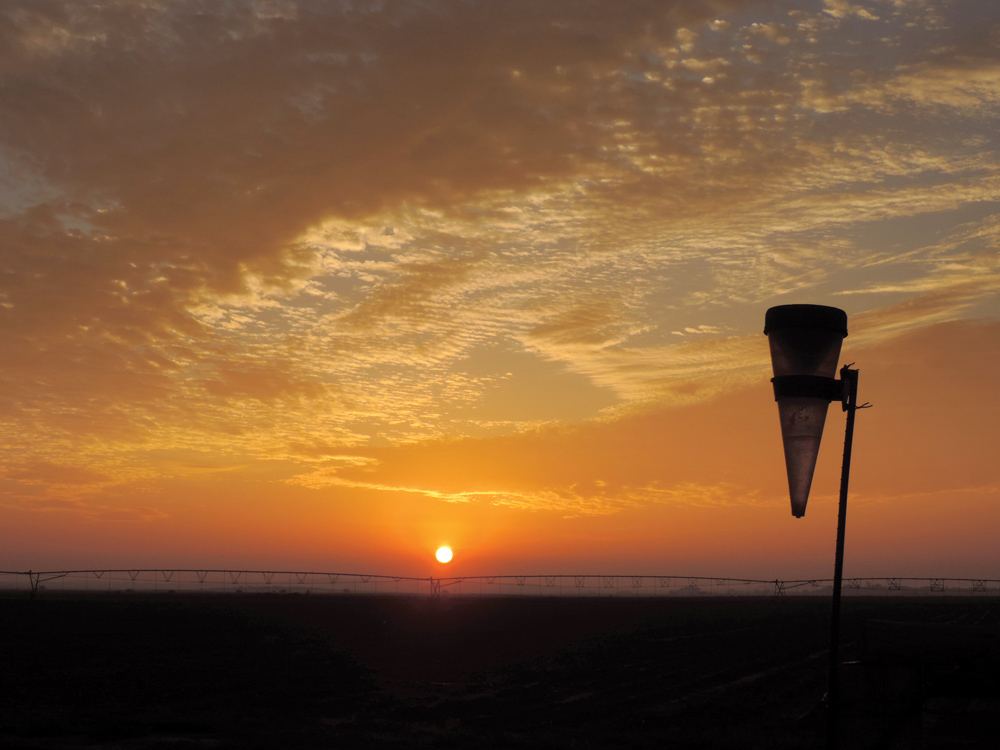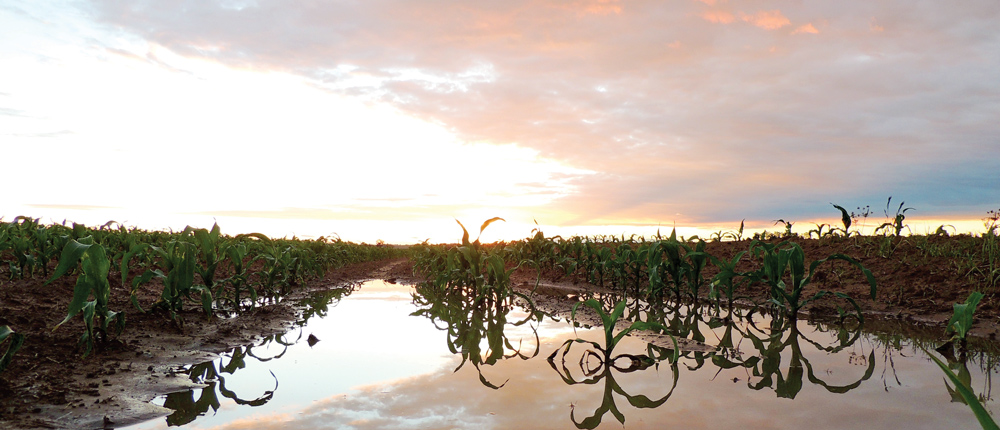November 2024
| JOHAN VAN DEN BERG, AGRICULTURAL METEOROLOGIS |
 |
NORMAL SUMMER CROP PLANTING DATES ARE IN NOVEMBER AND DECEMBER, WHICH MEANS THAT CROPS WILL BE IN THE FLOWERING AND PITFILL STAGES DURING FEBRUARY AND MARCH. THE 2023/2024 SUMMER SEASON WILL BE REMEMBERED FOR EXTREMELY DRY AND HOT CONDITIONS IN THESE IMPORTANT PRODUCTION MONTHS. BUT WHAT DOES THE NEW SEASON HAVE IN STORE?
Very high temperatures due to drought can cause severe damage. It is estimated that yield reductions during extreme conditions can be as high as 5% per day, meaning that an entire crop can be lost or severe losses can occur within about three weeks.
These dry and hot conditions were caused by a very strong El Niño event. It is a known fact that an El Niño can be responsible for adverse rainfall conditions in the second part of the summer season. Other factors such as tropical cyclones in the Indian Ocean further strengthened the negative effect of El Niño on the rainfall. Drought conditions are unfortunately part of the normal climate due to El Niño events.
Considering the history, El Niño events occurred in about three to four out of ten years – although not all of them were responsible for disaster droughts. Droughts like the 2023/2024 season can occur in about one or two out of ten years. In the past, seasons with severe droughts occurred in 1982/1983, 1986/1987, 1991/1992, 1994/1995, 1997/1998, 2002/2003, 2015/2016 and 2023/2024.

Photo: Vida van Schalkwyk
DIFFERENCE BETWEEN EL NIÑO AND LA NIÑA
El Niño is the Spanish for “boy child” and the name originated from South America a few hundred years ago, where fishermen in the Pacific Ocean experienced very poor fish harvests in some years. It was in the midsummer of December, near Christmas, when the central Pacific Ocean’s water was warmer than normal, causing the fishes to migrate further away from the mainland towards cooler and more nutrient-rich waters.
The opposite of El Niño is called La Niña, or “little girl” in Spanish, also with an occurrence of about three or four out of ten years. It is usually associated with above average rainfall for the summer rainfall area of South Africa.
The rest of the seasons (about one third of the years) are neither El Niño nor La Niña, and are referred to as neutral seasons.
El Niño and La Niña also differ in the timing of the rainfall distribution in a season.
WHAT TO EXPECT FOR THE 2024/2025 SUMMER SEASON
After the 2023/2024 El Niño ended in April 2024, neutral conditions set in with forecasts of La Niña conditions from October 2024. However, the development of the expected La Niña for 2024/2025 is very slow and there is some uncertainty whether it will eventually take place or whether it will remain in a neutral state.
The forecasts favoured a weak to moderate La Niña by October 2024, with these conditions lasting until March 2025. There is a 70% chance that a La Niña will occur and a 30% chance for neutral conditions of the sea surface temperatures. On the positive side of the uncertainty about La Niña, the chance for an El Niño event similar to the past season is about zero.
In terms of rainfall, the following is possible for the coming season for the summer rainfall area:
La Niña to neutral seasons (as expected for the 2024/2025 season) are not known for extended dry and hot conditions, as with an El Niño. There will be a so-called midsummer drought or dry spell in late December or January, but it is not expected to last for more than two weeks – although it may last longer over the eastern parts in February and March 2025.
The development of tropical cyclones in the Indian Ocean, towards the east coast of Africa, from January to March is of concern and something to be aware of. Tropical cyclones are responsible for heavy rain over the ocean and even over the east coast of Africa. However, they are also responsible for dry and hot conditions over the interior of Southern Africa.
The cyclone season is usually from January to March, with tropical cyclones lasting for about ten to 20 days, which coincides with the sensitive stages of crop development. This development is independent from El Niño or La Niña.
There are examples of crop failures in history during La Niña seasons due to the presence of tropical cyclones, but it is a very rare occurrence. An example was in January 1984, when a cyclone called Domoina battered the east coast of KwaZulu-Natal with heavy rain and storms, but also caused serious drought damage in the central to western summer crop area that included mainly the Free State and North West.
In terms of rainfall, the outlook for the summer crop areas is positive and favourable for crop production for the 2024/2025 season.
OTHER RISKS
Hail
This is a risk that is very difficult to forecast. The intensity and extent of hail occurrence differ from season to season, but the risk is usually higher towards the higher lying eastern production areas (Eastern Free State, KwaZulu-Natal and Mpumalanga).
The question is always if a farmer must insure against hail damage. This depends on his financial capacity – if a severe yield loss will result in a farmer not being able to continue farming in the next season, then it is essential for him to insure against yield losses. If the insurance premium is high, then it is an indication of a higher risk because premiums are calculated according to historic yield losses.
Hail insurance should be part of the normal input cost budgeted to ensure the sustainability of farming activities.
Planting dates
Both too early and too late plantings can result in severe yield losses. The best planting dates for maize and soybeans are from October to the middle or end of November for the Eastern Free State, KwaZulu-Natal and Mpumalanga. For the central to western parts of the summer grain area, it is from the middle of November to the end of December.
Too late plantings can result in insufficient heat or growth units to complete the growth cycle of a plant to reach maturity. Frost damage may also occur with too early or too late plantings.
Type of soil
The water holding capacity of soil is very important. With the increased effect of climate change, as well as factors such as El Niño, the intensity and extent of dry and wet spells can be responsible for drought or water-logged conditions.
Therefore, it is essential to produce on soils that can store water to be used during dry spells but are not responsible for serious water-logged conditions.

Photo: Tiani Claassen
LONGER TERM OUTLOOK
The country is currently still in a so-called “wet cycle”, despite some dry conditions due to the El Niño of 2023/2024. Forecasts indicate that drier conditions are likely to set in from 2025/2026, after completion of the expected La Niña of 2024/2025.
This drier cycle can last from 2026 until about 2030. It is important to take this into account and use the expected favourable rainfall season of 2024/2025 to restructure farming activities for the expected drier conditions that will follow.
A useful tip for grain farmers is to avoid chasing large areas, but rather to classify and select fields or parts of fields according to the yield potential. If the yield history of specific fields indicates low or highly variable yields, it is better to use such areas for cultivated pastures or even to identify areas that must be returned to natural grazing.
Publication: November 2024
Section: Pula/Imvula